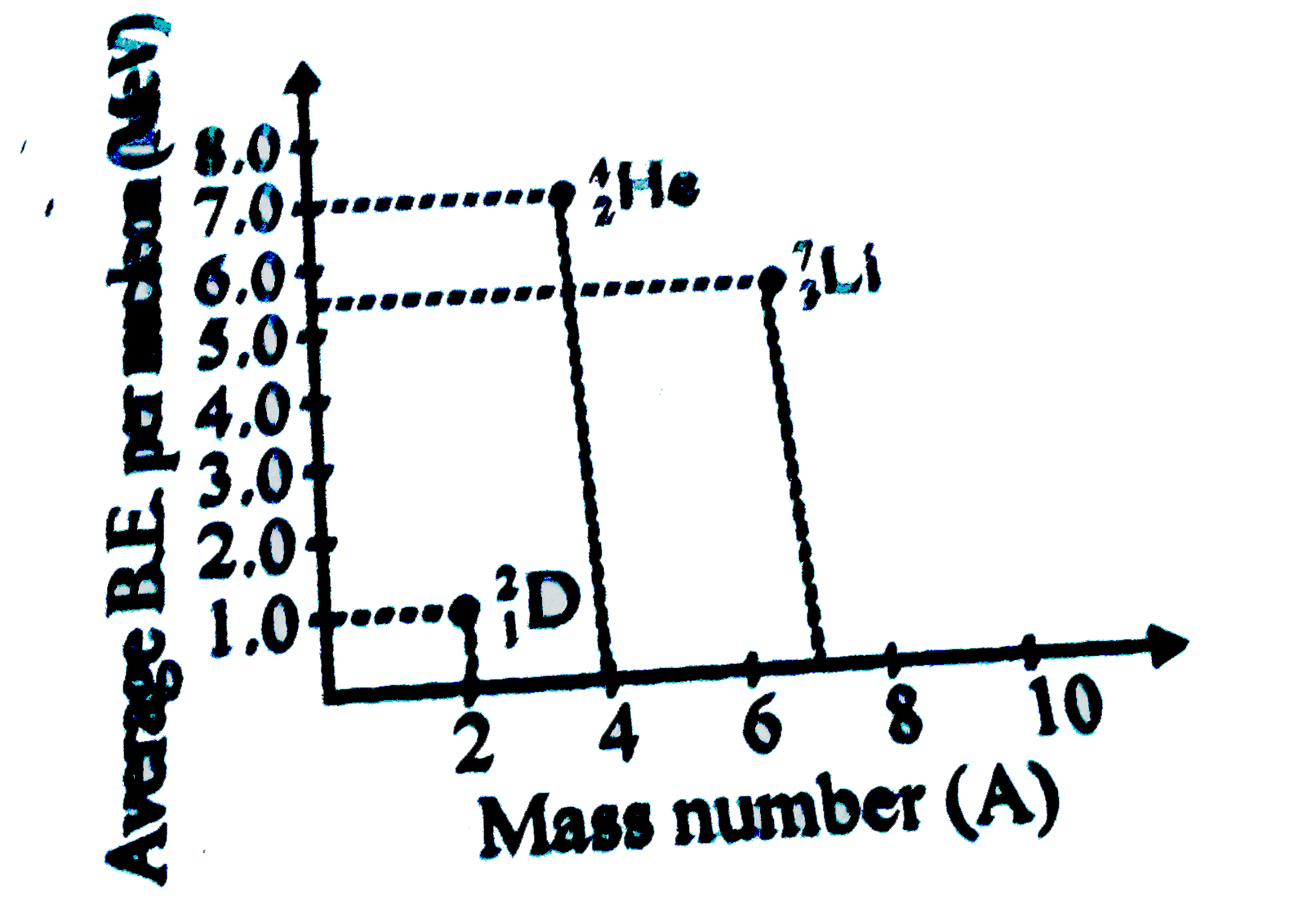The positions of .21D,.42He and .73Li are shown on the binding energy curve as shown in figure. The energy released in the fusion reaction .21D+.73Li→2.42He+.10n will be closest to

A
20 MeV
B
16 MeV
C
8 MeV
D
4 MeV
Text Solution
Q=−2×1−7×5.5+8×7=56−2−38.5=15.5
|
Updated on:21/07/2023
Related Playlists
- BOOK - BANSALCHAPTER - TEST PAPERSEXERCISE - CHEMISTRY133videos
TEST PAPERS
- BOOK - BANSALCHAPTER - TEST PAPERSEXERCISE - MATHEMATICS58videos
TEST PAPERS
- BOOK - BANSALCHAPTER - TEST PAPERSEXERCISE - MATHS SECTION - 2 [MULTIPLE CORRECT CHOICE TYPE]6videos
TEST PAPERS
- BOOK - BANSALCHAPTER - PROBABILITYEXERCISE - All Questions1videos
PROBABILITY
- BOOK - BANSALCHAPTER - THERMODYNAMICSEXERCISE - Match the column7videos
THERMODYNAMICS
Knowledge Check
- Question 1 - Select One
The reaction
.1D2+.1T3→.1He2+.0n1
is an example ofANuclear fissionBNuclear fusionCArtifical radioactivityDRadioactive disintegration - Question 1 - Select One
The process, 1H2+1H3→2He4+0n1 represents the types of reaction known as
ANuclear fissionBNuclear fusionCArtifical disintegrationDTransmutation of element - Question 1 - Select One
The equation .3Li6+.1H2→2.2He4+ energy represents
ASynthesis of heliumBTransmutation of elementCFusion reactionDNuclear fission - Question 1 - Select One
If the binding energy per nucleon in _(3)7Liand42Heνc≤iare5.60MeVand7.06MeV respectively then in the reaction
P+73Li→242He
energy of proton mnust beA28.24MeVB17.28MeVC1.46MeVD39.2MeV - Question 1 - Select One
The binding energy of 21H is 1.112 MeV per nucleon and an alpha-particle 42He has a binding energy of 7.047 MeV per nucleon. In the fusion reaction 21H+ 21H→ 42He+Q, the energy released is
A1MeVB11.9MeVC23.8 MeVD931 MeV
Similar Questions
The reaction
.1D2+.1T3→.1He2+.0n1
is an example ofView SolutionThe positions of 2D1,4H2e and 7L3iare shown on the binding energy curve as shown in the figure. Find the energy released (in multiple of 2(MeV) ) in the fusion reaction, 2D1+underset(3)overset(7)Li rarr 24H2e+1no
'(## CEN_KSR_PHY_JEE_CO30_E01_038_Q03##)'View SolutionCalculate the energy released in the following reaction
.3Li6+.0n1→.2He4+.1H3View SolutionCalculate the energy released in the following reaction
.3Li6+.0n1→.2He4+.1H3View SolutionBinding energy per nucleus of .21H and .42He are 1.1 MeV and 7 MeV respectively. Calculate the amount of energy released in the following process:
.21H+.21H→.42HeView Solution

